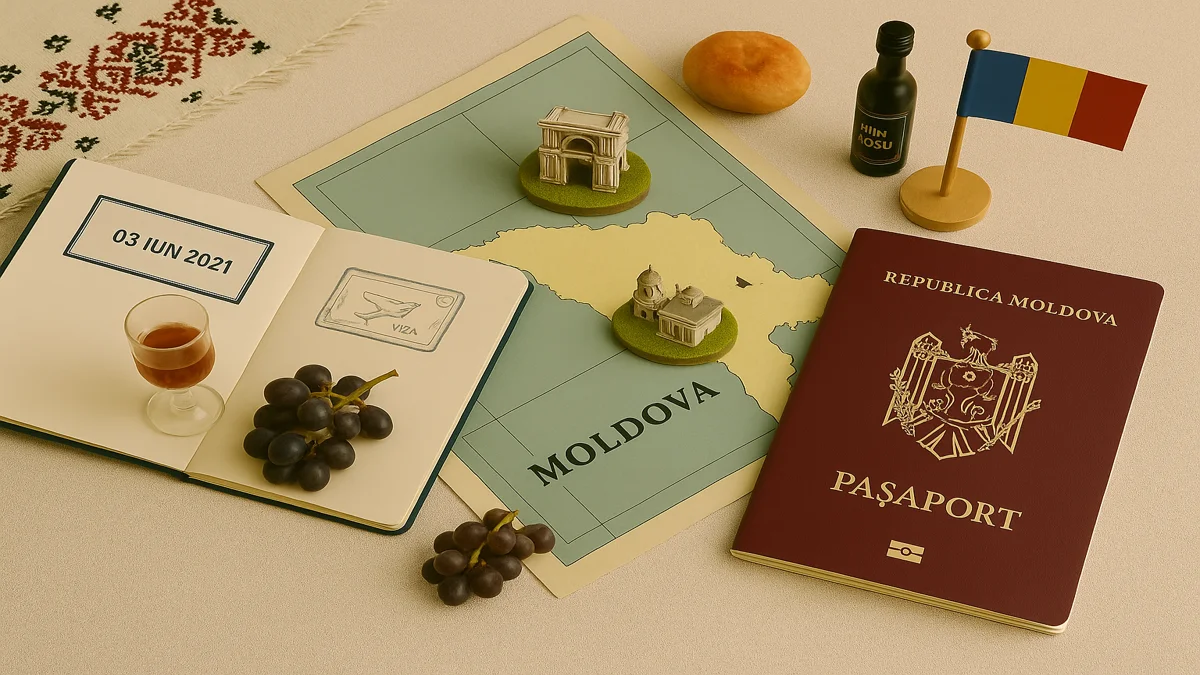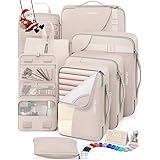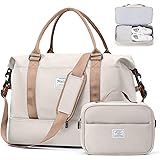Moldova Travel Guide 2025: The Ultimate Handbook for First-Time Visitors
Planning your first adventure to Moldova in 2025? You’ve picked one of Europe’s last true hidden gems! This ultimate guide is packed with everything you need to know to make your trip unforgettable. From exploring the Soviet-era architecture of Chișinău to tasting world-class wine in underground cellars and venturing into the breakaway territory of Transnistria, we’ve got you covered.
Moldova, a country of captivating authenticity, offers a unique blend of Romanian and Russian influences, warm hospitality, and rolling green landscapes. It’s a destination that enchants the curious traveler, whether you’re wandering through bustling markets, exploring ancient cave monasteries, or simply savoring hearty, traditional flavors.
Get ready to discover why Moldova is one of Europe’s most rewarding and off-the-beaten-path travel destinations. Let’s dive into the 15 essential tips that will help you plan, budget, and experience the very best of this amazing country.
Table of Contents
- 1. Why Visit Moldova in 2025?
- 2. Best Time to Visit Moldova
- 3. Top Destinations in Moldova for First-Timers
- 4. Planning Your Moldova Trip: A Step-by-Step Guide
- 5. Accommodation in Moldova: Where to Stay
- 6. Getting Around Moldova: Transportation Guide
- 7. How Much Does a Trip to Moldova Cost?
- 8. Must-Try Foods and Cultural Delights
- 9. Staying Safe in Moldova
- 10. Solo Travel in Moldova
- 11. Traveling Moldova with Family or as a Senior
- 12. Digital Nomads in Moldova
- 13. Essential Packing List in our Moldova Travel Guide
- 14. FAQs for First-Timers
- 15. What’s Next? More Guides to Explore
1. Why Visit Moldova in 2025?
Moldova is a land of surprising charm and genuine experiences. In 2025, it stands out as the perfect choice for travelers seeking authenticity far from the tourist crowds. Its unique blend of Soviet history, Latin roots, and world-renowned wine culture makes it truly special.
The Allure of Europe’s Hidden Gem
Imagine exploring the world’s largest wine cellars, stepping back in time in the self-declared republic of Transnistria, or enjoying the warm hospitality of a nation proud of its traditions. Moldova offers all this and more. The country boasts a welcoming, safe atmosphere, hearty and delicious cuisine, and a rural landscape that feels untouched by time.
From the leafy boulevards of Chișinău to the ancient cave monastery of Orheiul Vechi, Moldova promises a journey filled with discovery. It’s a place where you can connect with locals, explore a complex history, and taste incredible wine, all on a budget that’s hard to beat in Europe.
ETIAS Update for 2025
Good news for travelers! The European Travel Information and Authorization System (ETIAS) is still not required for U.S. and other visa-exempt travelers visiting the Schengen Area in 2025. Its implementation has been postponed to mid-2026. This means your entry to Moldova, while not in Schengen, follows its own straightforward visa-free policies for many nationalities, without the added ETIAS step for neighboring EU countries like Romania.
Looking for the best hotel or flight deals?
Plan your trip with ease using the Expedia search tool below. From charming boutique hotels to luxury resorts, this widget helps you compare top options in seconds — flights included!
2. Best Time to Visit Moldova
Choosing the right time to visit Moldova can significantly enhance your experience. The country has four distinct seasons, each offering unique charms.
Spring (April-May): Blooming Landscapes & Pleasant Weather
- Weather: Mild and pleasant, with temperatures from 15-22°C (59-72°F). Perfect for city sightseeing and exploring the countryside as it turns green.
- Crowds: Fewer crowds and lower prices.
- Pros: Ideal weather for walking tours in Chișinău and visiting Orheiul Vechi. Easter celebrations offer a unique cultural experience.
- Cons: Weather can be unpredictable with some spring showers.
Summer (June-August): Long Days & Vibrant City Life
- Weather: Hot and sunny, with temperatures often reaching 25-30°C (77-86°F).
- Crowds: Peak tourist season, though “peak” in Moldova is still very quiet compared to other European countries.
- Pros: Best weather for enjoying outdoor cafes (terrace culture) in Chișinău. All attractions are open with longer hours.
- Cons: Can be quite hot, especially in July and August.
Autumn (September-October): Wine Harvest & Golden Hues
- Weather: Warm and generally dry, especially in September, with temperatures from 18-24°C (64-75°F).
- Crowds: A popular time due to wine-related events.
- Pros: Often considered the best time to visit. It’s the wine harvest season, culminating in the National Wine Day festival in Chișinău in early October. The countryside is beautiful with autumn colors.
- Cons: Book accommodation in advance if visiting during National Wine Day.
Winter (November-March): Snowy Charm & Festive Markets
- Weather: Cold, with temperatures often dropping below freezing, from -4 to 4°C (25-39°F). Snow is common.
- Crowds: Very few tourists.
- Pros: Excellent for budget travel. Chișinău has a charming Christmas market. A chance to experience a true Eastern European winter.
- Cons: Very cold, requiring proper winter clothing. Shorter daylight hours.
Recommendation for First-Timers: For the perfect combination of pleasant weather and unique cultural events, aim for September or early October to experience the wine harvest season.
Make Your Travel Moments Go Viral — Instantly
Your next viral Reel and Tiktok is just a Flipstik away. Film hands-free on buses, beaches, or balconies—anywhere your phone can stick.
🎯 Click here and gear up like a creator!3. Top Destinations in Moldova for First-Timers
For a country so compact, Moldova is packed with unique and fascinating places. Here are the must-visit spots for your first trip.
Chișinău: The Leafy Green Capital
Moldova’s capital is a city of wide boulevards, sprawling parks, and a mix of Soviet-era and modern architecture. Explore the Triumphal Arch, wander through the Nativity Cathedral Park, and dive into the bustling atmosphere of the Central Market (Piața Centrală). It’s a surprisingly green and pleasant city, perfect as a base for your explorations.
Cricova & Mileștii Mici: The Underground Wine Cities
An absolute must-do. These are not just cellars; they are underground cities with miles of tunnels filled with wine. Mileștii Mici holds the Guinness World Record for the largest wine collection in the world. You tour them by car or electric train. It’s a unique and unforgettable experience.
Orheiul Vechi (Old Orhei): The Cliffside Monastery
This stunning archaeological complex is Moldova’s most important historical site. A 13th-century cave monastery is carved directly into a massive limestone cliff overlooking the Răut River. The surrounding landscape of rolling hills and traditional villages is breathtaking.
Transnistria: A Glimpse into the USSR
A visit to the breakaway territory of Transnistria is like stepping back in time. This self-declared republic has its own currency, flag (complete with hammer and sickle), and government. Its capital, Tiraspol, is a fascinating showcase of Soviet monuments and architecture. It’s a safe and popular day trip from Chișinău.
Soroca: The Roma Capital
Located in the north, Soroca is famous for two things: its impressive medieval fortress overlooking the Dniester River and being the unofficial “Roma capital of Moldova.” Here you can see the unique and often flamboyant mansions built by the local Roma community on “Gypsy Hill.”
4. Planning Your Moldova Trip: A Step-by-Step Guide
Planning your first trip to Moldova is easier than you think. Breaking it down into simple steps makes the process smooth and stress-free.
Setting Your Budget & Travel Style
First, decide on your budget. Moldova is one of the most affordable countries in Europe, offering incredible value. Decide if you want a city-focused cultural trip, a wine-tasting adventure, or a deep dive into the country’s history.
Crafting Your Itinerary
Don’t try to rush. For a 3-4 day trip, focus on Chișinău and day trips to a winery (like Cricova) and Orheiul Vechi. With 5-7 days, you can add a fascinating day trip to Transnistria. A car is not essential as many tours and public transport options are available from the capital.
Booking Flights & Accommodation
Book flights 2-4 months in advance. The main airport is Chișinău International Airport (RMO). Accommodation is plentiful and affordable, but it’s still wise to book ahead for the best options, especially for autumn travel.
Understanding Visa & Entry Requirements
For most nationalities (e.g., US, UK, EU, Canadian, Australian citizens), a visa is not required for tourist stays of up to 90 days. Always ensure your passport is valid for at least three months beyond your intended departure date.
Securing Travel Insurance
This is non-negotiable. Get comprehensive travel insurance that covers medical emergencies, trip cancellations, and lost luggage. It’s a small price for peace of mind.
5. Accommodation in Moldova: Where to Stay
Moldova offers a great range of affordable accommodation, from modern hotels in the capital to charming rural guesthouses.
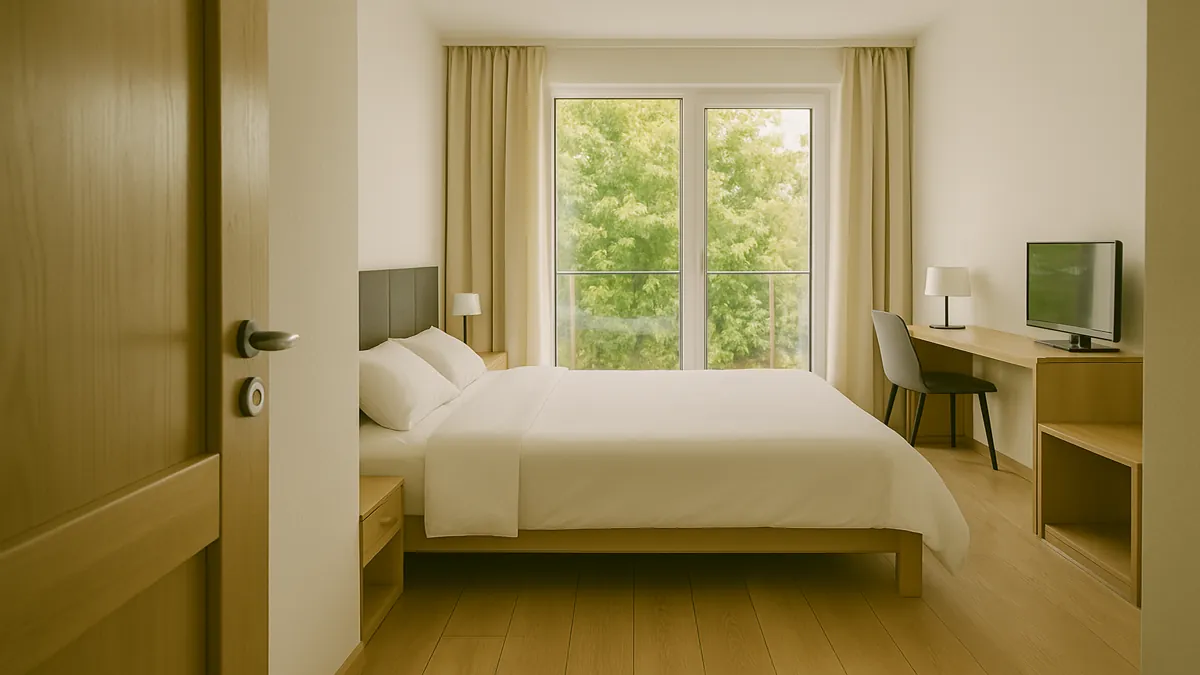
Hotels: Modern & Centrally Located
Chișinău has a growing number of modern, comfortable hotels, from international chains to local boutique options. They are often centrally located, offer excellent value compared to other European capitals, and usually include breakfast.
Apartments: The Local Choice
Renting an apartment via platforms like Airbnb or Booking.com is very popular and cost-effective. It gives you more space, a kitchen to prepare meals, and a chance to live like a local. This is the most common type of accommodation in Chișinău.
Guesthouses & Pensions (Pensiune): Authentic Hospitality
In rural areas like Orheiul Vechi, staying in a traditional guesthouse is a highlight. These family-run establishments offer a warm welcome, incredible home-cooked meals, and a deep dive into Moldovan culture and hospitality.
Hostels: Social & Budget-Friendly
Chișinău has a small but friendly hostel scene. They are perfect for solo travelers and those on a tight budget, offering dorm beds and private rooms. They are great places to meet other travelers and organize informal tours.
6. Getting Around Moldova: Transportation Guide
Navigating Moldova is part of the adventure. The system is a mix of Soviet-era efficiency and modern convenience.
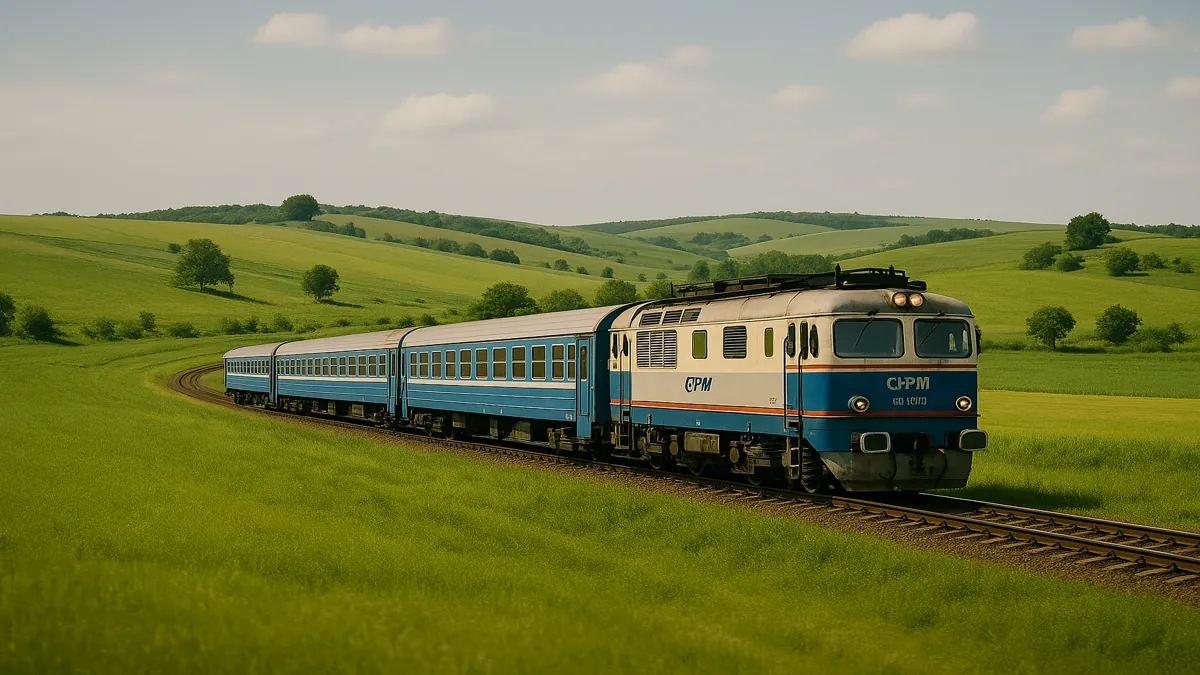
Public Transport in Chișinău (Trolleybuses)
- Pros: Trolleybuses are the backbone of Chișinău’s public transport. They are incredibly cheap (a few cents per ride) and cover the entire city. It’s a true local experience.
- Cons: Can be crowded. Routes can be confusing for first-timers, but apps like Google Maps are making it easier.
Marshrutkas (Minibuses)
- Pros: These fixed-route minibuses are the primary way to travel between cities and to major attractions like Orheiul Vechi. They are frequent and inexpensive.
- Cons: They can be crowded, and drivers often depart only when the bus is full. Luggage space is limited.
- Booking: You don’t book. You go to the central bus station (Gara Centrală) and find the minibus with your destination written on it.
Taxis & Ride-Sharing
- Pros: Taxis are very affordable in Moldova. Ride-sharing apps like Yandex Go and Bolt are widely used in Chișinău and are the easiest and safest way to get a taxi with a fixed price.
- Cons: Hailing a taxi on the street may lead to inflated prices; always use an app.
Driving (Car Rental)
- Pros: A rental car offers the most flexibility for exploring the countryside and remote monasteries at your own pace.
- Cons: Road conditions outside of major cities can be poor. Local driving styles can be aggressive. For most first-time itineraries focused on Chișinău and major day trips, it’s not necessary.
Tours
- Pros: For visiting wineries and Transnistria, booking a guided tour is often the easiest and most informative option. They handle all the logistics, transport, and border formalities (for Transnistria).
Ready to book your train tickets hassle-free?
Search routes and compare prices on Trainline – your one-stop platform for rail travel across Europe.
7. How Much Does a Trip to Moldova Cost?
Moldova is consistently ranked as one of the cheapest countries to visit in Europe. Your money goes a long way here, making it a fantastic destination for budget-conscious travelers.
Daily Cost Estimates (Per Person)
- Budget Traveler: €25-€40 / $28-44 USD per day
- Accommodation: Hostel dorms.
- Food: Supermarket meals, street food like plăcinte, cooking your own food.
- Transport: Public trolleybuses and marshrutkas.
- Activities: Free activities like parks, markets, walking tours.
- Mid-Range Traveler: €50-€90 / $55-100 USD per day
- Accommodation: Private apartment rentals, budget hotels.
- Food: Eating out at casual restaurants and traditional cafes.
- Transport: Using ride-sharing apps (Yandex/Bolt), taking organized day tours.
- Activities: Paid attractions like wine tours and museum entries.
- Luxury Traveler: €100+ / $110+ USD per day
- Accommodation: Top-tier hotels in Chișinău.
- Food: Fine dining, wine tasting menus.
- Transport: Private driver, premium car rental.
- Activities: Private tours, exclusive wine tastings.
Money-Saving Tips:
- Eat at “La Plăcinte”: This is a popular and affordable chain of restaurants serving delicious traditional Moldovan food.
- Use Trolleybuses: In Chișinău, a trolleybus ride costs just a few Moldovan Leu. It’s the cheapest way to get around.
- Shop at the Central Market: Buy fresh produce, cheese, and snacks for very low prices at the Piața Centrală.
- Drink Local Wine: Excellent quality wine is incredibly cheap, even in restaurants.
- Drink Tap Water: The tap water in Chișinău is generally considered safe to drink, though many locals prefer bottled water.
8. Must-Try Foods and Cultural Delights
Moldovan cuisine is a hearty and delicious blend of Romanian, Russian, Ukrainian, and Ottoman influences, with a focus on fresh, local ingredients.
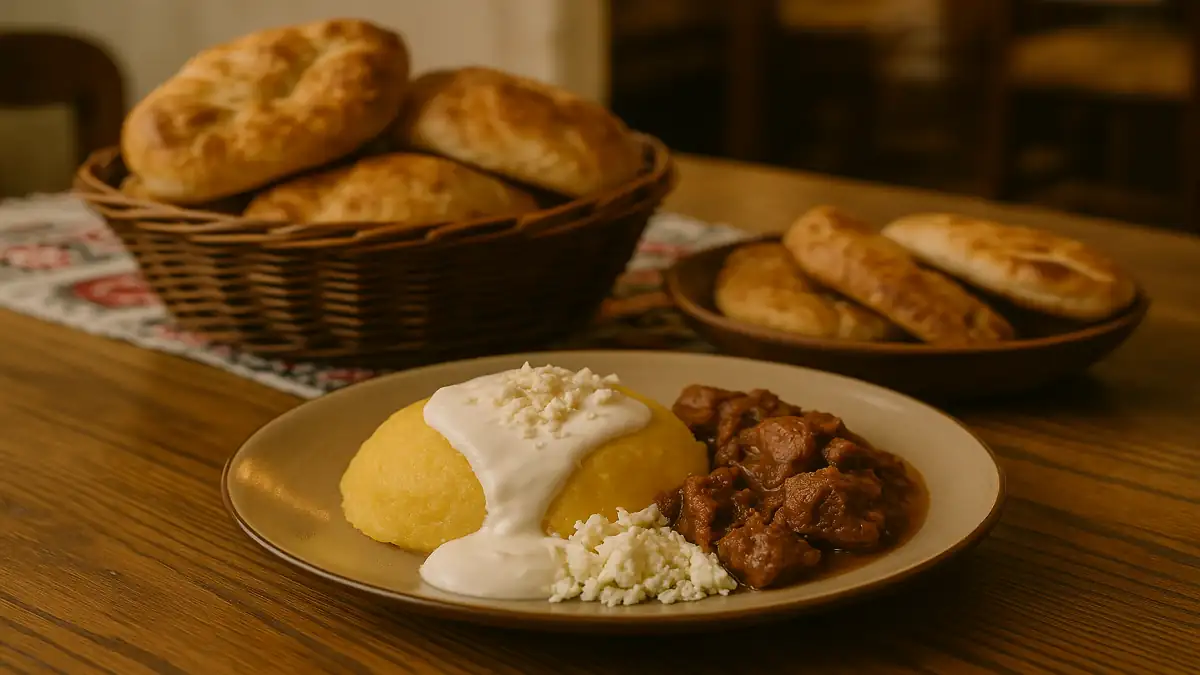
Iconic Moldovan Dishes
- Mămăligă: The national dish. A creamy cornmeal polenta, often served with sour cream (smântână), cheese (brânză), and a meat stew (tocană).
- Plăcinte: A traditional pastry that can be either sweet (with cheese or pumpkin) or savory (with potatoes or cabbage). A perfect and cheap snack.
- Zeamă: A traditional light chicken noodle soup, soured with fermented wheat bran (borș). It’s considered a national comfort food.
- Sarmale: Cabbage or grape leaves stuffed with a mix of minced meat and rice, a dish popular throughout the Balkans.
- World-Class Wine: Moldova has a rich winemaking history. Be sure to try local grape varieties like Fetească Albă (white), Fetească Neagră (red), and Rară Neagră (red).
The Wine Culture
Wine is the heart of Moldovan culture and national pride. The National Wine Day in October is a massive festival. Visiting a winery is not just a tour; it’s a deep dive into the country’s identity.
Cultural Etiquette & Local Customs
- Hospitality: Moldovans are incredibly hospitable. If invited to a home, it’s polite to bring a small gift like flowers or a bottle of wine.
- Language: The official language is Romanian. Russian is also widely spoken, especially by the older generation. English is becoming more common among young people in Chișinău. Learning “Mulțumesc” (thank you) will be greatly appreciated.
- Tipping: Tipping is not obligatory but is appreciated for good service. Rounding up the bill or leaving 5-10% in restaurants is a nice gesture.
9. Staying Safe in Moldova
Moldova is a very safe country for tourists, with low rates of violent crime. The main things to be aware of are petty crime and taking sensible precautions, especially when visiting Transnistria.
General Safety Tips
- Be Aware of Your Surroundings: Take normal precautions in crowded places like the Central Market or on public transport.
- Protect Your Valuables: Petty theft can occur. Don’t flash expensive items.
- Taxis: Use ride-sharing apps like Yandex Go or Bolt to avoid being overcharged.
Visiting Transnistria
- Is it Safe?: Yes, it is generally safe for tourists to visit on a day trip. The atmosphere is calm and controlled.
- Border Crossing: You will pass through checkpoints. Your passport will be checked, and you’ll be given a migration card (entry permit), usually valid for 24 hours. Keep this card with your passport at all times.
- Rules: Be respectful, don’t take photos of military personnel or government buildings, and avoid political discussions. It’s best to go with a guide or on a tour for your first visit to ensure a smooth experience.
Emergency Numbers
- The universal emergency number in Moldova is 112 for police, ambulance, and fire services.
10. Solo Travel in Moldova
Moldova is a fantastic, safe, and affordable destination for solo travelers looking for an off-the-beaten-path adventure. The friendly hostel scene in Chișinău makes it easy to meet other people, and the country’s compact size makes it manageable to explore alone.
Joining group day tours to wineries or Transnistria is a great way to see the main sights and connect with fellow travelers. The general safety and helpfulness of locals make for a stress-free independent travel experience.
11. Traveling Moldova with Family or as a Senior
Moldova’s relaxed pace and friendly atmosphere can be appealing for families and seniors, with some planning.
Traveling with Family
- Outdoor Fun: Families will enjoy exploring Chișinău’s large parks, like Dendrarium Park. The unique experience of a wine cellar tour via electric train can be fun for older children.
- Accommodation: Renting an apartment is ideal for families, providing space and kitchen facilities.
- Pacing: The country is small, so travel times are short. A base in Chișinău with day trips is a relaxed way to see the country.
Traveling as a Senior
- Accessibility: Be aware that sidewalks in Chișinău can be uneven. Infrastructure may not be as developed for mobility issues as in other European countries.
- Relaxed Pace: Moldova is perfect for slowing down. Enjoy the cafe culture, take leisurely strolls through parks, and enjoy long, affordable meals with excellent wine.
- Tours: Guided tours are an excellent, comfortable way to see the main sights like Orheiul Vechi and the wineries without navigating public transport.
12. Digital Nomads in Moldova
Moldova is emerging as an intriguing destination for digital nomads, thanks to its extremely low cost of living, fast internet, and a new digital nomad visa program.
- Digital Nomad Visa: Moldova launched its “IT Visa” program, which is effectively a digital nomad visa, designed to attract tech professionals. It offers a simplified process for obtaining a residence permit. Always check the official government websites for the latest requirements.
- Best Cities for Nomads:
- Chișinău: The undisputed hub. It has a growing number of co-working spaces, a vibrant cafe culture, and all the necessary infrastructure for remote work.
- Connectivity: Moldova boasts some of the fastest and cheapest internet in the world.
- Cost of Living: The biggest draw. It is one of the most affordable places in Europe, allowing for a very high quality of life on a small budget.
Looking for a smarter way to manage your travel money? Wise offers real exchange rates with no hidden fees, making it the perfect companion for international trips.
13. Essential Packing List in our Moldova Travel Guide
Packing for Moldova is about preparing for four distinct seasons and practical exploration.
Clothing
- Layers: Essential for adapting to changing temperatures, especially in spring and autumn.
- Comfortable Walking Shoes: You’ll be doing a lot of walking on potentially uneven sidewalks.
- Rain Jacket or Umbrella: Rain is possible, especially in spring and autumn.
- Warm Clothing (for winter): A proper winter coat, hat, gloves, and scarf are non-negotiable for a winter trip.
- Slightly Dressier Outfit: For a nice dinner or a night out at a wine bar in Chișinău.
- Modest Clothing: For visiting monasteries and churches (women may need a headscarf, which is often provided at the entrance).
Essentials & Accessories
- Universal Travel Adapter: Moldova uses Type C and F plugs (two round pins).
- Portable Power Bank: For charging devices on the go.
- Reusable Water Bottle: Stay hydrated.
- Daypack: For daily excursions.
- Copies of Important Documents: Keep digital and physical copies of your passport and travel insurance.
As an Amazon Associate, we earn from qualifying purchases.
14. FAQs for First-Timers
Here are some frequently asked questions to help you plan your first trip to Moldova.
What currency does Moldova use?
Moldova uses the Moldovan Leu (MDL). The Euro is not accepted in most places, so you will need to exchange money or withdraw from an ATM upon arrival.
Is English widely spoken?
English is not as widely spoken as in other European capitals, but it’s growing among the younger generation in Chișinău. In hotels, popular restaurants, and tour companies, you will find English speakers. Learning a few words in Romanian or having a translation app is very helpful.
Is Moldova expensive?
No, Moldova is one of the cheapest countries in Europe. It offers exceptional value for money on accommodation, food, and transport.
Is it safe to visit Transnistria?
Yes, it is generally considered safe for tourists to visit, especially on a day trip from Chișinău. Go with a reputable tour company for the smoothest experience, and always be respectful of local rules.
What is the best way to get around?
In Chișinău, use ride-sharing apps (Yandex Go, Bolt) or the cheap trolleybus system. For travel between cities, marshrutkas (minibuses) are the most common method. For wineries and Transnistria, organized tours are often the most convenient option.
15. What’s Next? More Guides to Explore
Your Moldovan adventure awaits! We hope this comprehensive guide has equipped you with all the essential information to plan an unforgettable trip to Europe’s best-kept secret. From the vast underground wine cities to the fascinating glimpse into a bygone era in Transnistria, Moldova promises a journey filled with authenticity, warmth, and lasting memories.
Happy travels, and enjoy your unforgettable journey through Moldova!
Related Articles to Inspire Your Next Adventure:
🇪🇺 Western Europe
🇪🇺 Southern Europe
🇪🇺 Northern Europe
🇪🇺 Central Europe
🇪🇺 Eastern Europe & Baltics
🌍 Continental Overview
References:
European Union. (2025, April 14). Revised timeline for the EES and ETIAS. Retrieved from Official EU Site
